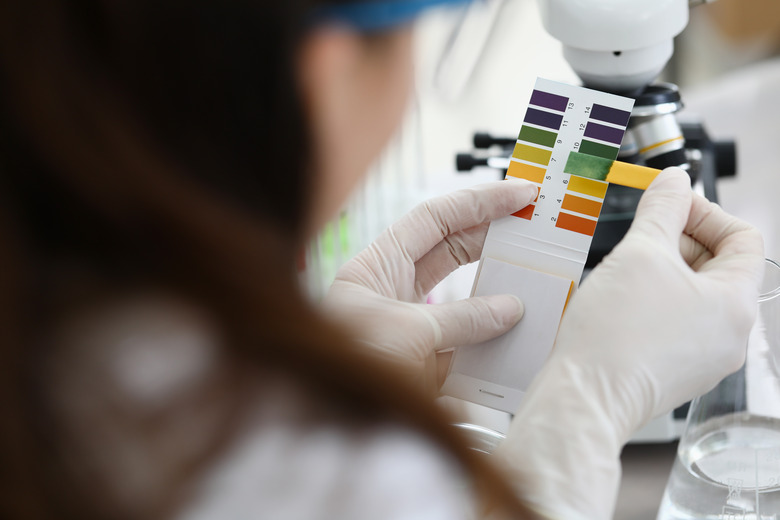How To Measure pH Levels
PH levels of liquids are critical. Water pH levels are important in chlorinated pools because too much chlorine is acidic and can burn skin. Water pH levels in aquariums are important as well to ensure the fish remain healthy. PH levels can also be tested on juices, saliva and urine to determine the acidity or base of the body, which indicates when you are more at risk for medical conditions and/or disorders. PH test strips are easy to find, easy to use and easy to read. They are one of the most common forms of pH testing.
Step 1
Dip the test strip in the desired water source.
Step 2
Swirl around three times in a circle about a foot wide in diameter; if a phial is used, circle as wide as possible five times to ensure a good sample.
Step 3
Turn the test strip flat when pulling it out of the water. Do not shake off the water; let some sit on top of the strip.
Step 4
Wait for the strip to change colors.
Step 5
Refer to the box for strip specific colors and scale. The scale for water goes from 0 to 14, with 0 being the most acidic (like battery acid) and 14 being the most base (like lye). Water, depending on whether or not it is chlorinated, should be around 7. It is neutral.
Things Needed
- PH test strip
- Aquarium or desired water source
- Reading glasses (optional)
TL;DR (Too Long; Didn't Read)
When measuring the pH levels of a small aquarium, circle the strip four to five times to ensure a good reading. Dark-colored substances might give inaccurate readings. The shelf life of pH level test strips is normally two years as long as they are kept in a cool, dry and relatively dark place.
References
Cite This Article
MLA
Coennen, Sarah. "How To Measure pH Levels" sciencing.com, https://www.sciencing.com/measure-ph-levels-5607373/. 4 November 2009.
APA
Coennen, Sarah. (2009, November 4). How To Measure pH Levels. sciencing.com. Retrieved from https://www.sciencing.com/measure-ph-levels-5607373/
Chicago
Coennen, Sarah. How To Measure pH Levels last modified March 24, 2022. https://www.sciencing.com/measure-ph-levels-5607373/
